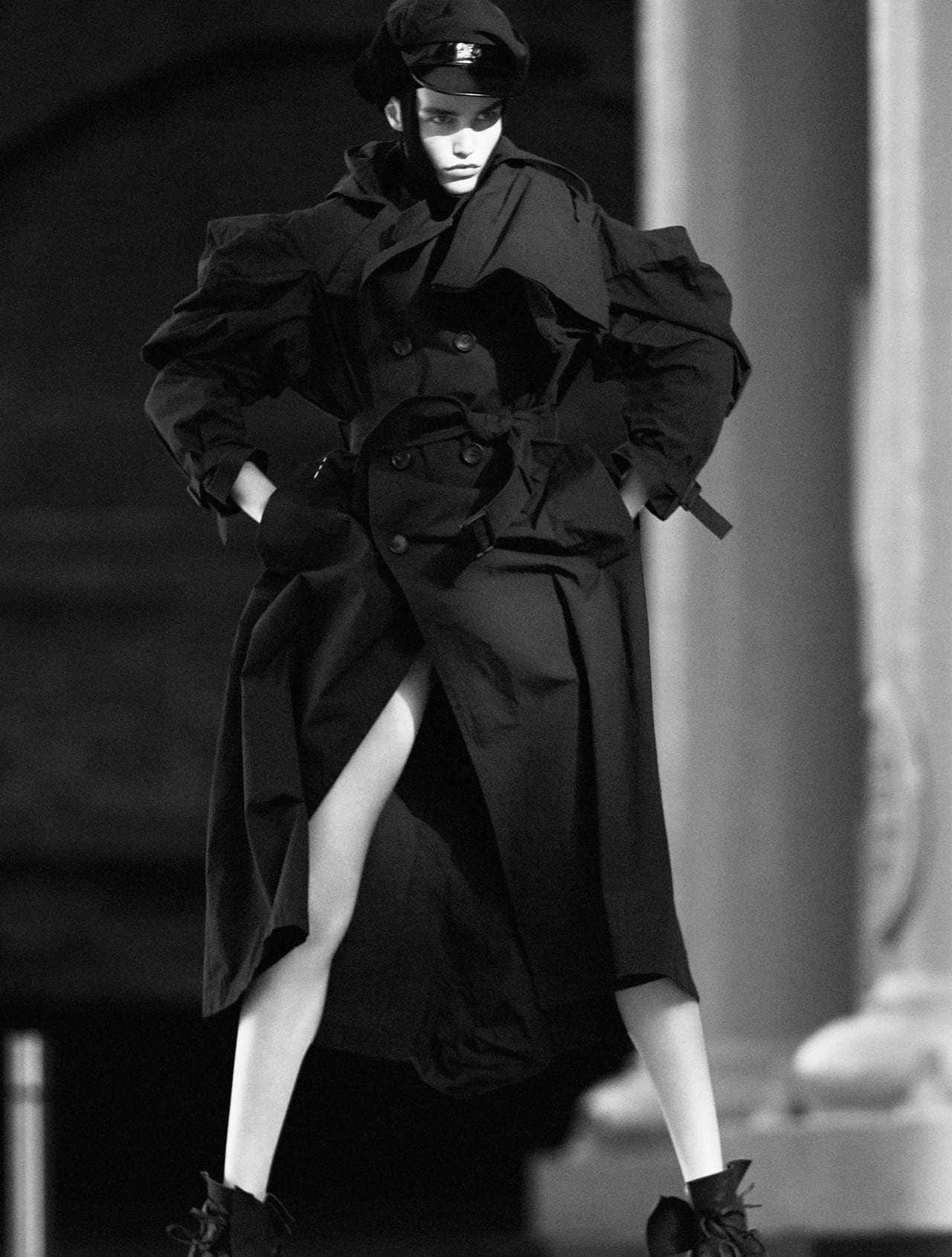Final Paper Proposal
- Date: March 9, 1943
Designer: Norman Hartnell
Clothing: Utility Clothing
- This picture captures four women wearing formal attires which are known as utility clothing. World War II brought great changes in fashion styles. Men left their houses to serve the military and women stayed home to protect the household. Some women, however, signed up for services. The changes in fashion styles apparently depicted the darkness of this period as men and women mostly wore uniforms that were more formal and practical. However, women who remained at home to protect the family wore attires called utility clothing. I chose this topic because I thought it was interesting how in times where people wore clothing that were more restricted and had CC41 labels, women could not give up their passion for dressing in more stylish clothing. Even though women were limited in how much they could spend, women still wanted to grasp their sense of style even though the coupons that they received during the war were not enough to satisfy the basic necessities. I want to focus on this theme because I think that there are a lot of interesting factors I can delve into since this was a global war. I think it would be interesting to research the global impacts and the emotional impacts of fashion during this time.
- My aesthetic focuses more on asymmetrical and abstract silhouettes, and I focus more on topics that are dark and personal. However, I do want to study further in-depth of utility clothing as they are more symmetrical and restrictive. I think it would be interesting to research how both asymmetrical and symmetrical silhouettes can serve as a means to provoke a dark mood.
- Date: June 6, 1960
Designer: N/A (Due to Mary Quant)
Clothing: Mini Skirt
- This is an image of women and men rebelling against the look of maxi dresses. Trending designers such as Mary Quant changed the women’s preferences in style as women abandoned longer maxi dresses and began to wear mini/short skirts. Women loved to express themselves, especially with the new trend of mini skirts. Raised hemline skirts gave women freedom allowing them to feel less pressured to the rules that women should presumably conform to. I really like how women utilized garments to express rebellion against social conformities in this era. The background and the confidence within the group of women protesting caught my attention the most.
- Even though I favor pants over skirts, I believe that I would have worn mini skirts to show rebellion and to obliterate the stereotypical thoughts of how women should behave and dress. Similar to the theory of Coco Chanel, I think that women should always have the same rights as men. I believe that these topic is still a prevalent topic that has not been completely solved. It is interesting how women wore mini-skirts instead of choosing garments that are more manly in order to express their rights. I would have thought they would have appeared in trousers in the protest; however, I appreciate how they wore skirts which is more associated with women to express equality.
- Date: 1980s
Designer: Yohji Yamamoto
Clothing: Clothing focusing on irregular shapes, oversized form, dark color, and palette
- Yohji Yamamoto exhibited his work as a way of showing rebellion of wanting to retain the relationship between the past and the future through his abstract silhouettes, and dark and simplified color palette. Yohji Yamamoto is now recognized as one of the most experimental and prominent designers who has completely changed the definition of beauty. He strictly defines beauty as imperfect, and that perfection is ugly and unattractive in the sense that beauty is found in its natural and intrinsic form. Yohji Yamamoto mentions that inherent beauty is imperfect. These images quite interestingly provoke two different emotions. The left picture appears rather rebellious, while the right picture seems more nostalgic and vacant. I believe Yohji’s dual feelings of wanting to protect his mother as well as wanting to set himself free from her drove him to create clothes using a simplified color palette (mainly black) that appear both nostalgic and rebellious at the same time. Yohji’s always wanted to break the rules during the Japanese revolution and wanted to be rebellious against his mother regardless of his keen appreciation towards her.
- I am very interested in creating clothes with interesting silhouettes as they serve complex and intertwined ideas to the wearers and the viewers. I believe that Yohji Yamamoto’s designs mainly focuses on abstract silhouettes and deconstruction. I always unconsciously choose a darker color palette as a base of any of my artworks and I believe that Yohji and I somehow share similar ideals.



